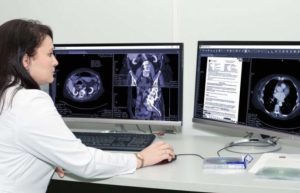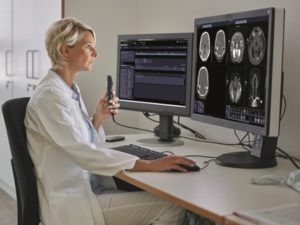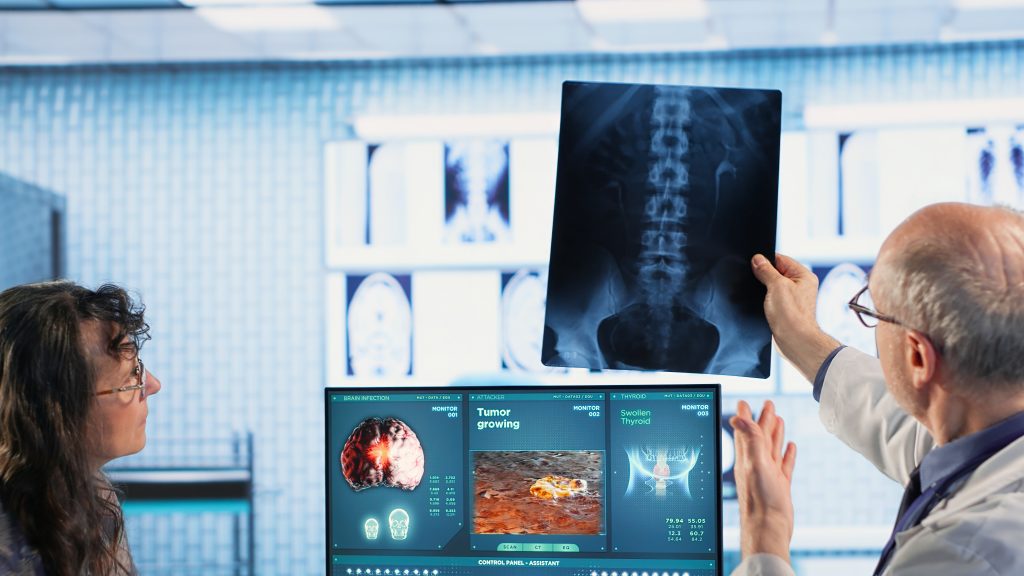Introduction
In a sometimes developed scenario with health technology, Radiology Information Systems (RIS) stand out as an important component in medical imaging. These systems have revolutionized the way radiological departments administered workflow, from patient planning to interpretation of images and reporting. Tools like the radiant radiology viewer further enhance these processes by offering advanced visualization and diagnostic support. In this article, we are engrossed by the complexities of R R as, their functionality, profit, challenges, and future discovery possibility.
Understand the Radiology Information System
In the core an information system for radiology is a special Software is designed to manage suite operations and Administrative work with radiological departments within
Healthcare Institutes. These systems are designed to streamline Complete imaging process, patient registration starts and Image collection, interpretation and planning of appointments for
Profit distribution.

Results in cost savings for health institutions. RIS facilitates spontaneous communication and collaboration Among radiologists, doctors and other health services mentioned Professional involved in patient care.
These systems help health organizations to follow the regulator store requirements and extensive documents, image studies, and interpretations. Integration of Radiology Information Systems with existing IT infrastructure in health services, including electronic health records (EHR) and PACs, can be complex and time-consuming. Ensuring user purchases and proper training are required for healthcare professionals to achieve successful adoption of RIS, especially in the context of advanced radiology practices.
Given the sensitive nature of medical imaging data, you must secure it. There are strong security measures to protect patient information Allopathy. Securing the difference between RIS and others in the health care system is important for seamless data exchange and workflow integration. There is continuous maintenance and support. The RIS system is required to stay up to date and run smoothly. Considering the future of the information system for radiology, promising tools like the radiant dicom viewer appear to have been designed with progress in technology, increasing their abilities further.
AI-algorithms in Radiology Information Systems have the capacity for integration to automate image analysis, improve clinical accuracy, and increase workflow efficiency. Cloud-based RIS solution suggestions enable scalability, flexibility, and availability, allowing healthcare organizations to manage imaging data and workflows effectively. Mobile RIS applications allow radiologists and referring doctors to access depiction data and reports remotely, increasing collaboration and flexibility. Continuous efforts to develop and use interoperability standards will facilitate smooth data exchange between RIS and other healthcare systems.
Additionally, the availability of tools like dicom viewer free can support wider access to imaging data, helping future RIS development focus on giving more patients access to their imaging reports and empowering them to play a more active role in their healthcare system.
Over the years, Radiology Information Systems (RIS) have become a core database for image departments, which secured them effective electronic control. Traditionally, the workflow in a radiology department was a closed system where paper-based imaging orders were obtained and distributed to the doctor in a single format. With the arrival of the radiology information system and PAC, this basic relationship was changed forever, as the immediate availability of images and sometimes access to anywhere became synonymous with today’s radiology departments. Tools like dicom viewer open source have further supported this shift by making image access and sharing more flexible and cost-effective.
However, with many different Radiology Information Systems (RIS) at hand, choosing the right RIS is a difficult and dull task for most radiology leaders and practices. This is complicated by the fact that it is not uncommon for the IT department of a health practice to choose an RIS without any input from the radiologist. Therefore, as a radiology manager or part of a healthcare system, one should not only understand the importance of the radiology information system in detail, but also recognize how a RIS can merge with its existing workflow.
RIS: to dissect it into its most fundamental elements.
Understanding the many terminologies used in relation to the Radiology Information System is essential before appreciating the importance of RIS.
Radiology includes the original components of information systems:

Centralized RIS: A centralized system, although too fast and efficient, is subject to major breakdown that can then stop the entire process of the radiology department.
Decentralized RIS: This system is preferred by radiologists because all components of the system do free work for each other. This ensures that failure in a component does not affect others.
HL7: This is the standardized data format that allows one application to send data to another in a mutually understandable format. This is the real communication language between the IT system health system, including messages, sections and areas.
Today, the RIS software is available as both offline models with the Mother-in-Law model, and reflects the future use of technology in the health and radiology sector. Radiology Information Systems are evolving to meet these needs by offering flexible deployment options that align with modern healthcare infrastructure.
The importance of radiology information systems
While most hospitals will use their infrastructure upgrading and undergo a broad digital change over the next decade, radiology departments have the ability to jump out of the package by utilizing the newest Radiology Information Systems (RIS) platforms to integrate the use of analyses with the most recent IT infrastructure. In many ways, one of which can support your future efforts includes tools like the radiant dicom viewer, which provide efficient image visualization and seamless integration with modern radiology workflows.
Patient, film, and supply tracking: A skilled RIS system allows you to monitor both patients, their radiology images, and real-time incoming and outgoing supply. Today, if a patient waits very long in the sitting group for the appointment, Radiology Information Systems can notify doctors of the same, helping improve efficiency and patient experience.
Workflow handling: Most radiologists agree that PACS cannot address workflows alone, especially in multi-special radiological centers. Radiology Information Systems can manage the workflow properly from the patient’s entry until a report is generated and the study is read by the radiologist. Conversely, a standalone PACS system can only manage images, obtain them from affected radiologists, and eventually save them—but not much beyond that.

Distribution of reports: One of the primary functions of radiology information systems is the distribution of reports, whereby the radiologist’s findings are dispersed across the radiology department via the affected persons, as well as other places or geographical areas with other counter radiologists. This can be done in three different ways – sharing through mail, fax, or e-post. Sending and registering is made very simple by the RIS system’s ability to store all doctor data in a central database. Tools like the online radiant viewer further enhance this process by allowing secure, real-time access to imaging reports and data from virtually anywhere.
In most cases, these three activities are noticed by hospitals: patient planning, registration, and admission. However, with the use of smarter Radiology Information Systems, several hospitals are gravitating toward using a single interface to regulate workflows related to all patients, especially as it helps to reduce costs.
Document: Today, most paper-based documentation functions are replaced by electronic processes. By storing the details of each person working in radiology workflow, Radiology Information Systems not only reduce the use of paper to a minimum, but also make the overall IT support much stronger.
Ordering and planning: A RIS is especially useful in cases where a doctor makes a request for imaging service that includes more than one radiology process. In addition to assisting with these procedures during an entry, Radiology Information Systems permit transparency on who is prescribed and where they are detained.
RIS future
Reducing RIS in its most widespread properties allows us to keep a look at the stores for health services, individual radiologists and future little practice. Let’s look at some of them:
Electronic medical record azgation: Radiologists are growing more conscious of the fact that Radiology Information Systems technology has the ability to save lives and offer additional benefits by incorporating the information system to uneven hospitals under one roof. In the future, we can expect to include or work hand in hand with EMR and PACS software for better management.
Clinical decision support: Integrated and efficient Radiology Information Systems-based equipment is already available, which can help improve patient management by optimizing resource use in the workflow series. One of many examples of such devices is a real-time image search functionality for a radiologist, so they can browse hundreds of relevant case files and images to make better cuts.
Digital Dashboard: In the near future, we can expect radiology dashboards to move towards a complete, real-time goal that can then be used to facilitate operating reforms. To provide more transparency and fewer barriers to improved quality and efficiency, these dashboards—when integrated with Radiology Information Systems—will prominently reference BI dashboards and analyses.
Choose Alm viewer for high quality RIS and Tailoring Services.
In FWS, we have worked with many global health services and have helped them implement strong RIS solutions as part of our wide Tailoring services. With over many years of expertise, we know that the ability to seamlessly integrate RIS with your current process is crucial to its implementation.

Radiology Information Systems (RIS) Market
To learn more about our health services, contact us now and really collaborate with the international supplier of Radiology Services who can help you meet your radiology needs.
8 Benefits of Radiology Information Systems
Patient Portal | Electronic Health Records | Industry News | Radiology Information System
A successful radiology practice requires a lot of effort and commitment. Many practitioners rely on antiquated paper-based systems to keep track of patient files and manage their workload. This practice is at a serious disadvantage compared to the practice that uses modern Radiology Information Systems, which streamline data management and enhance overall efficiency.
A database system used to organize and store patient data is called an information system for radiology. Included are image files acquired during diagnosis and treatment. An information system for radiology is a type of electronic health record system that is specifically used in radiology. Tools like the radiant dicom reader enhance this system by enabling fast, accurate viewing and interpretation of diagnostic images.
1. Better material management
If you have a paper journal system, material management is extremely time-consuming and often wrong. With a computerized system, your staff can quickly determine what has to be ordered right away and where you have extra inventory. Radiology Information Systems enhance this process by offering real-time tracking and reporting, giving you a lot of control over the budget.
2. Improves the efficiency
A well-designed radiology information system allows your employees to eliminate many overruns that exist in the registration process of new patients. Employees can enter data once and do not need to come in again. This lets your employees better use their time and increase morale. A RIS system also makes planning very easy so that your employees can see in a moment what is available when installing initial consultation or following appointments. Additionally, integrating tools like a dicomdir viewer helps streamline access to imaging data stored in DICOM directories, further improving workflow efficiency.
3. Error with low data introduction
Since it takes low keystrokes to enter data, the recorded information is far more accurate than being without a modern radiology information system. For example, there are templates to guarantee an employee before going to the next screen.
4. Saves money
One of the most important driving factors for leaders and owners of a radiology practice to invest in Radiology Information Systems is the fact that it saves money. Not only do employees take less time to enter the data, but they spend less time correcting the mistakes because they are very less likely to make them.
5. Increases revenue
An essential component of your company’s success is the duration of your revenue cycle. Your Radiology Information System for Information System Reports reduces processing time and increases revenue. The sooner you process documents to bill suppliers for your services, the less the income cycle will be. However, this also reduces the recalled agreements. Since a RIS system is designed to easily join the report, it is very easy to monitor the outstanding Challan and follow the required payment. These efficiencies are especially important in advanced radiology practices, where streamlined workflows directly impact both patient care and financial performance.
The government provides financial incentives to doctors who care for Medicaid and Medicare patients. To qualify, doctors must use certified rice software that is well equipped to generate reports.
6. More accurate diagnosis
A streamlined rice application leads to more accurate diagnosis. This means that you can expect to improve the data collected about the positive results of the patient for the year.
7. Better patient coordination
With computerized items, it is very easy to coordinate the patients’ care. You can collaborate with a hospital for a procedure or for post-treatment practice. In addition, you can share details with the patient’s general physician or contact experts. Radiology Information Systems make this coordination even more efficient by enabling seamless access to patient data and imaging records across multiple care providers.
8. Better patient care
By computerizing and streamlining papers, increasing the accuracy of data input and increasing the speed of the right diagnosis, you have time to focus on your patients and give them high quality to them.
To learn more about infection in an information system for radiology, how can you improve the quality of the top and bottom and patient care you gave, contact us today. We would like to present you a demo of software, to see what it can do for you and your practice.

